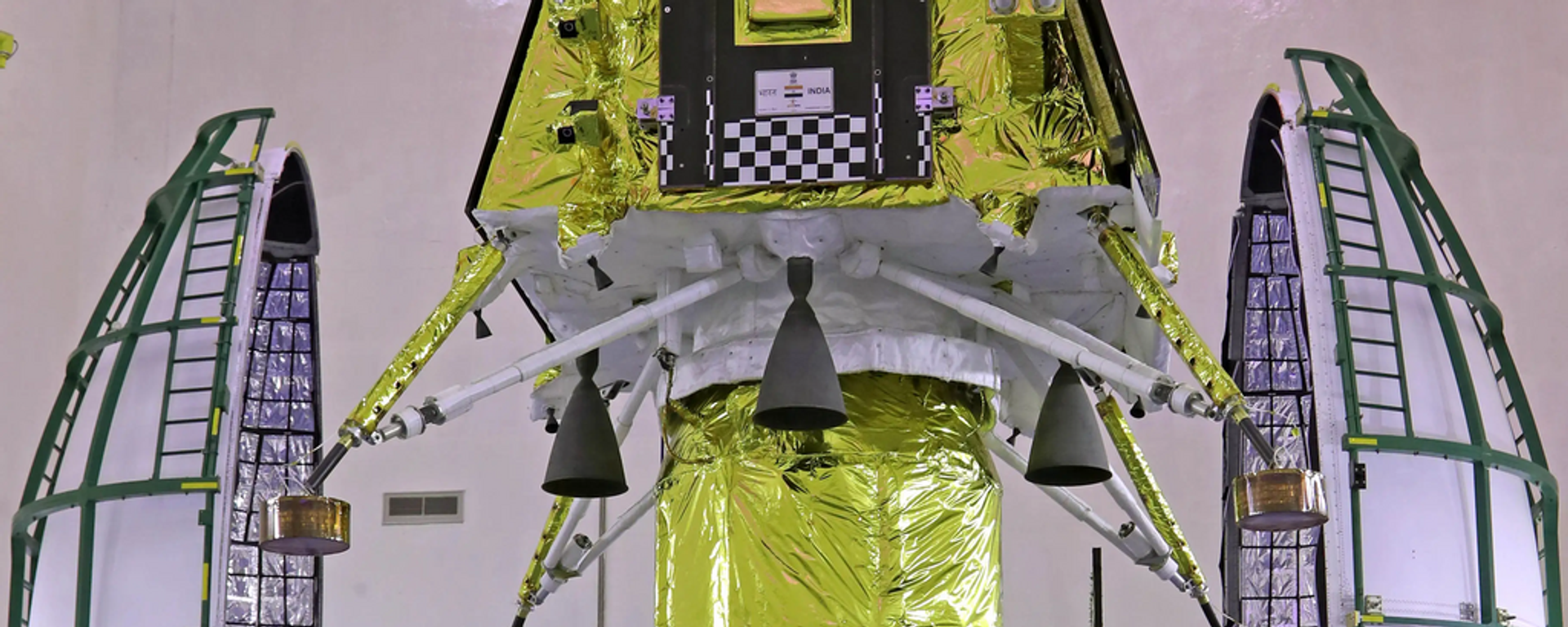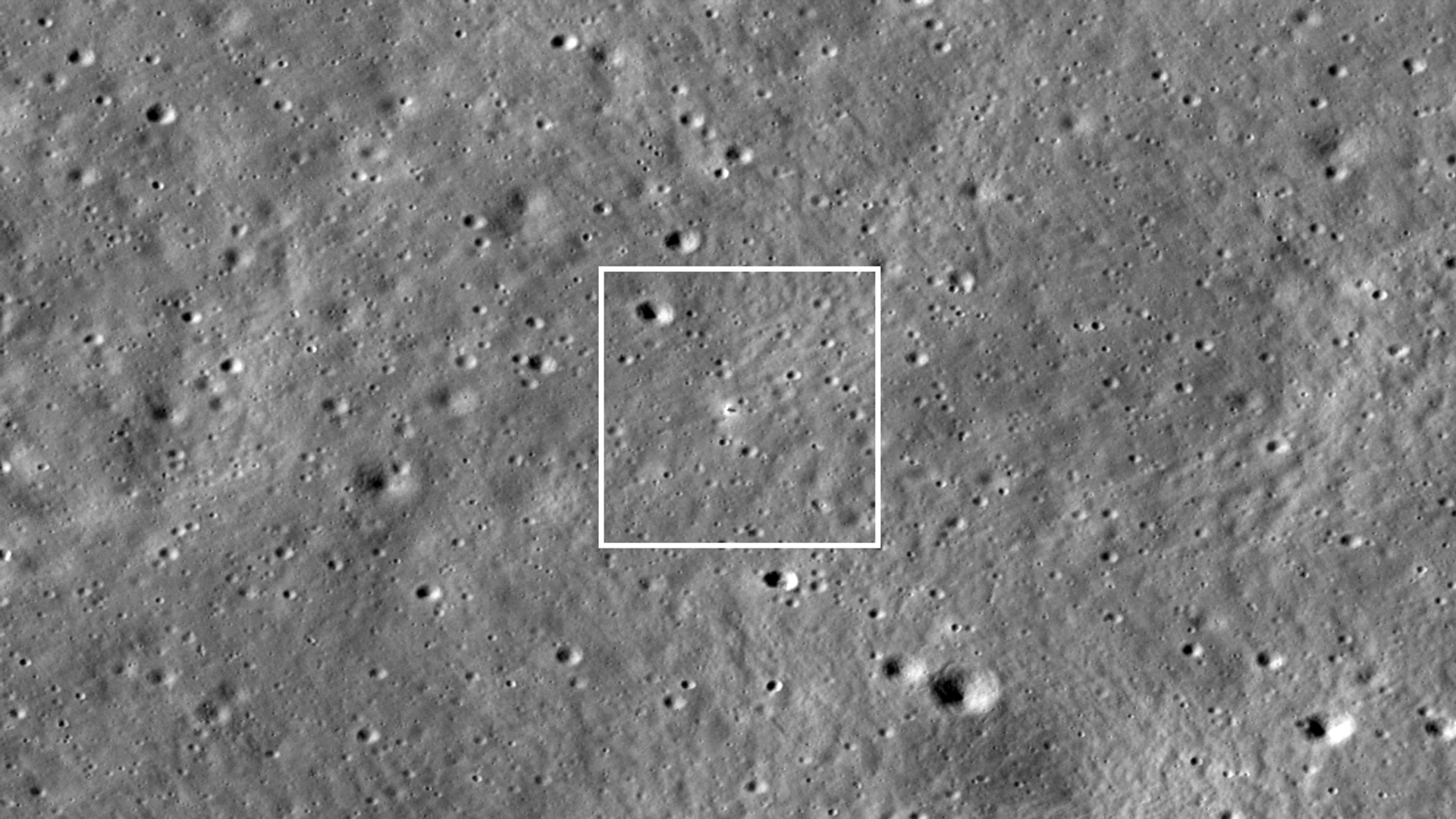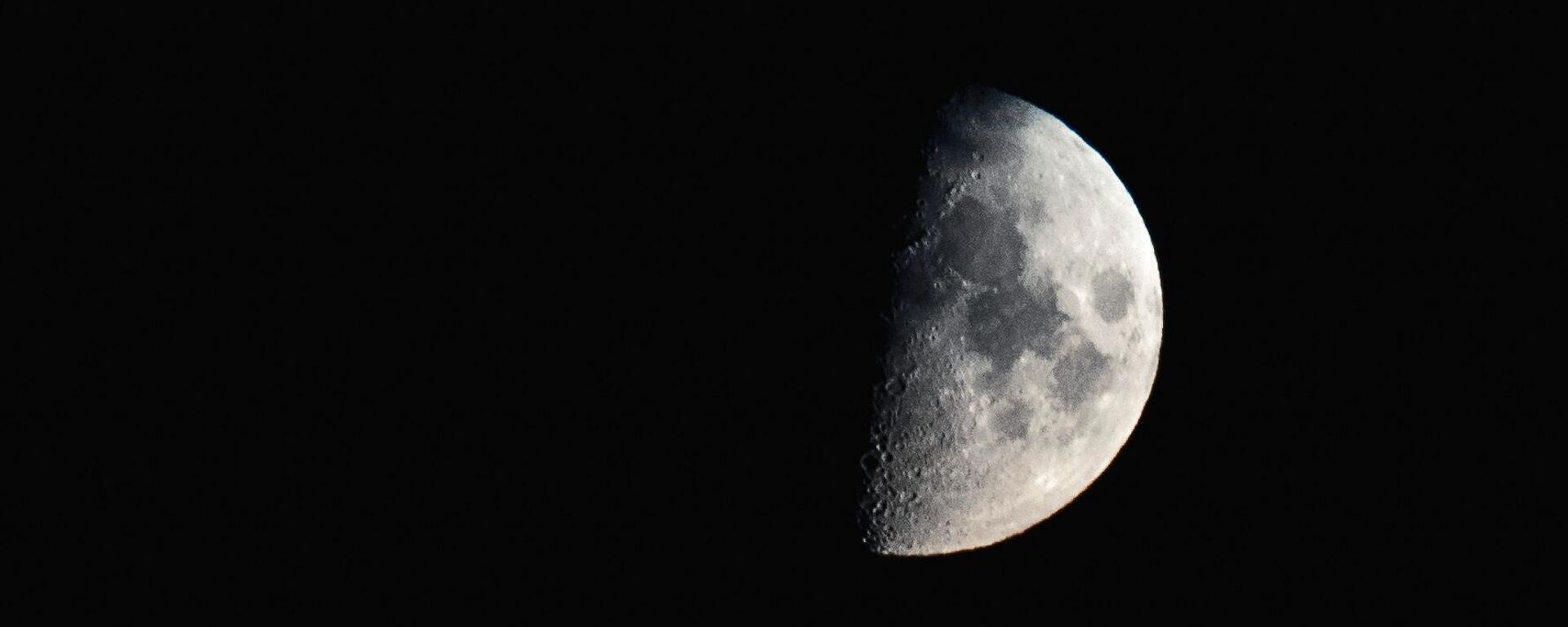https://sputnikglobe.com/20230906/nasas-lunar-orbiter-captures-chandrayaan-3s-historic-moon-landing-site-1113163744.html
NASA's Lunar Orbiter Captures Chandrayaan-3's Historic Moon Landing Site
NASA's Lunar Orbiter Captures Chandrayaan-3's Historic Moon Landing Site
Sputnik International
The image, taken just days after the epic lunar touchdown on August 23, reveals the lunar lander Vikram as a bright blip amidst the rugged lunar terrain.
2023-09-06T23:58+0000
2023-09-06T23:58+0000
2023-09-06T23:56+0000
beyond politics
science & tech
indian space research organization (isro)
nasa
chandrayaan-3
lunar reconnaissance orbiter telescope
moon
https://cdn1.img.sputnikglobe.com/img/07e7/09/06/1113163267_0:240:1100:859_1920x0_80_0_0_581bb9e5c849d825f31a70fefdd18705.png
NASA's Lunar Reconnaissance Orbiter recently captured a stunning image of the historic landing site of Chandrayaan-3, the mission undertaken by the Indian Space Research Organisation (ISRO).Chandrayaan-3, comprising the lander Vikram and rover Pragyan, has wasted no time in conducting scientific experiments on the lunar surface. Recent analyses of the landing site's regolith have unveiled the presence of sulfur, manganese, silicon, and oxygen, providing crucial insights into the lunar chemistry.Additionally, Vikram executed an impressive "hop" test, while Pragyan diligently explored its immediate surroundings.One of the most significant revelations came from the Instrument for Lunar Seismic Activity (ILSA), the first Micro Electro Mechanical Systems (MEMS) technology-based instrument on the moon. ILSA appears to have detected a seismic event, sparking intense curiosity among scientists eager to unravel the moon's internal structure.Currently, both the lander and rover are in a temporary "sleep" mode due to the lunar night, which lasts approximately 14 days. As solar-powered missions, Vikram and Pragyan await the return of sunlight to recharge their batteries and resume their exploration activities on September 22.The exciting development promises to deepen our understanding of the enigmatic lunar south pole and bring humankind closer to solving the mysteries of Earth's satellite.
https://sputnikglobe.com/20230822/photos-indias-chandrayaan-3-orbiter-snaps-images-of-moons-far-side-ahead-of-landing-1112793207.html
https://sputnikglobe.com/20230708/rare-granite-mass-found-under-lunar-surface-upending-understanding-of-earths-satellite-1111736842.html
Sputnik International
feedback@sputniknews.com
+74956456601
MIA „Rossiya Segodnya“
2023
News
en_EN
Sputnik International
feedback@sputniknews.com
+74956456601
MIA „Rossiya Segodnya“
Sputnik International
feedback@sputniknews.com
+74956456601
MIA „Rossiya Segodnya“
nasa lunar orbiter, chandrayaan 3 vikram pragyan, what is the status of chandrayaan 3, is chandrayaan 3 still active, india lunar mission 2023 chandrayaan 3, 2023 lunar missions
nasa lunar orbiter, chandrayaan 3 vikram pragyan, what is the status of chandrayaan 3, is chandrayaan 3 still active, india lunar mission 2023 chandrayaan 3, 2023 lunar missions
NASA's Lunar Orbiter Captures Chandrayaan-3's Historic Moon Landing Site
The image, taken just days after the epic lunar touchdown on August 23, reveals the lunar lander Vikram as a bright blip amidst the rugged lunar terrain. The brilliance is attributed to the interaction between the lander's rocket plume and the lunar regolith.
NASA's Lunar Reconnaissance Orbiter recently captured a stunning image of the historic landing site of
Chandrayaan-3, the mission undertaken by the Indian Space Research Organisation (ISRO).

22 August 2023, 18:21 GMT
Chandrayaan-3, comprising the lander Vikram and rover Pragyan, has wasted no time in conducting scientific experiments on the lunar surface. Recent analyses of the landing site's regolith have unveiled the presence of sulfur, manganese, silicon, and oxygen, providing crucial insights into the lunar chemistry.
Additionally, Vikram executed an impressive "hop" test, while Pragyan diligently explored its immediate surroundings.
One of the most significant revelations came from the Instrument for Lunar Seismic Activity (ILSA), the first Micro Electro Mechanical Systems (MEMS) technology-based instrument on the moon. ILSA appears to have detected a seismic event, sparking intense curiosity among scientists eager to unravel the moon's internal structure.
Notably, the last substantial seismic data collected from the moon dates back to the Apollo program in the late 1960s and 1970s.
Currently, both the lander and rover are in a temporary "sleep" mode due to the lunar night, which lasts approximately 14 days. As solar-powered missions, Vikram and Pragyan await the return of sunlight to recharge their batteries and resume their exploration activities on September 22.
The exciting development promises to deepen our understanding of the enigmatic lunar south pole and bring humankind closer to solving the mysteries of Earth's satellite.




